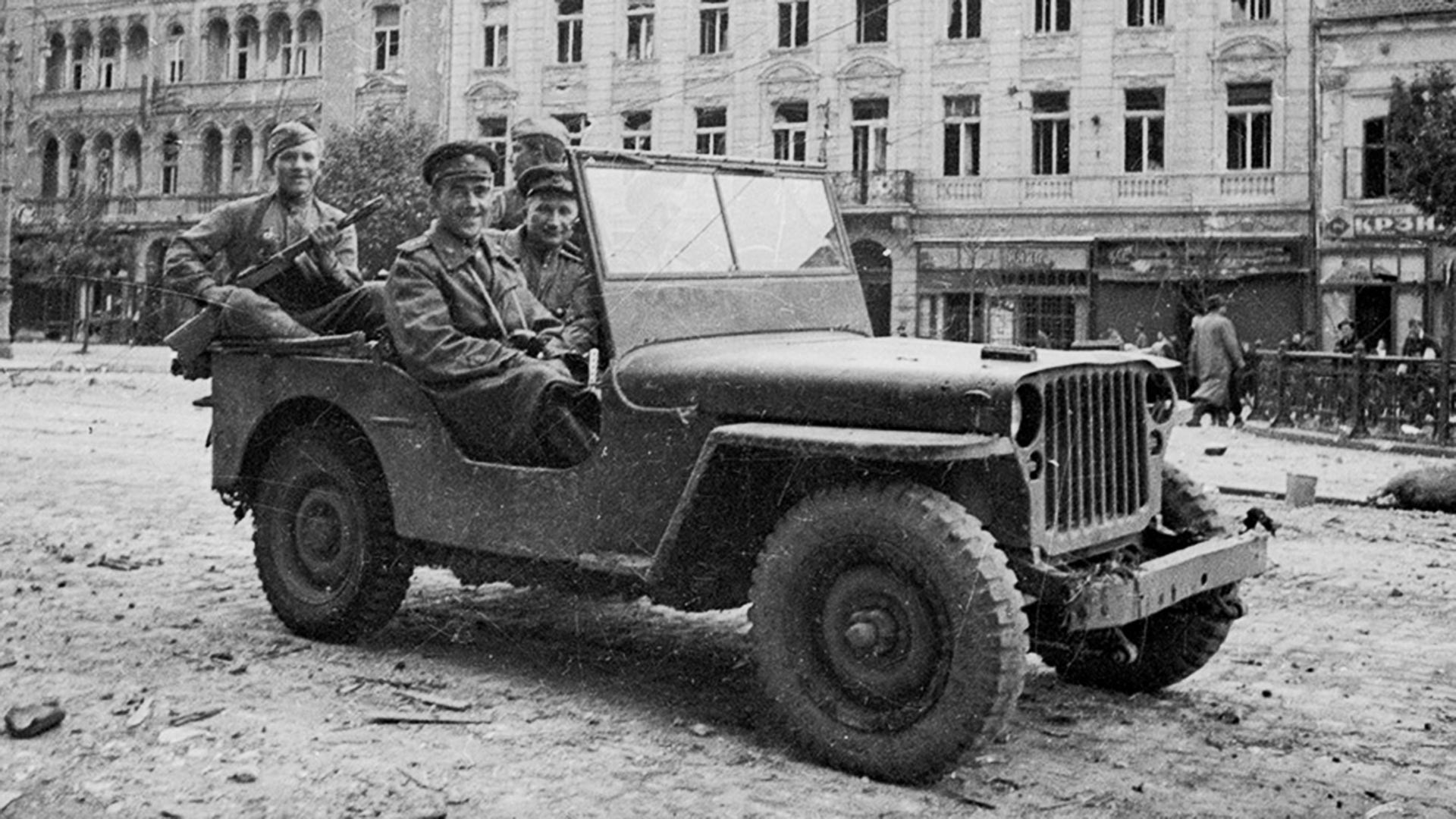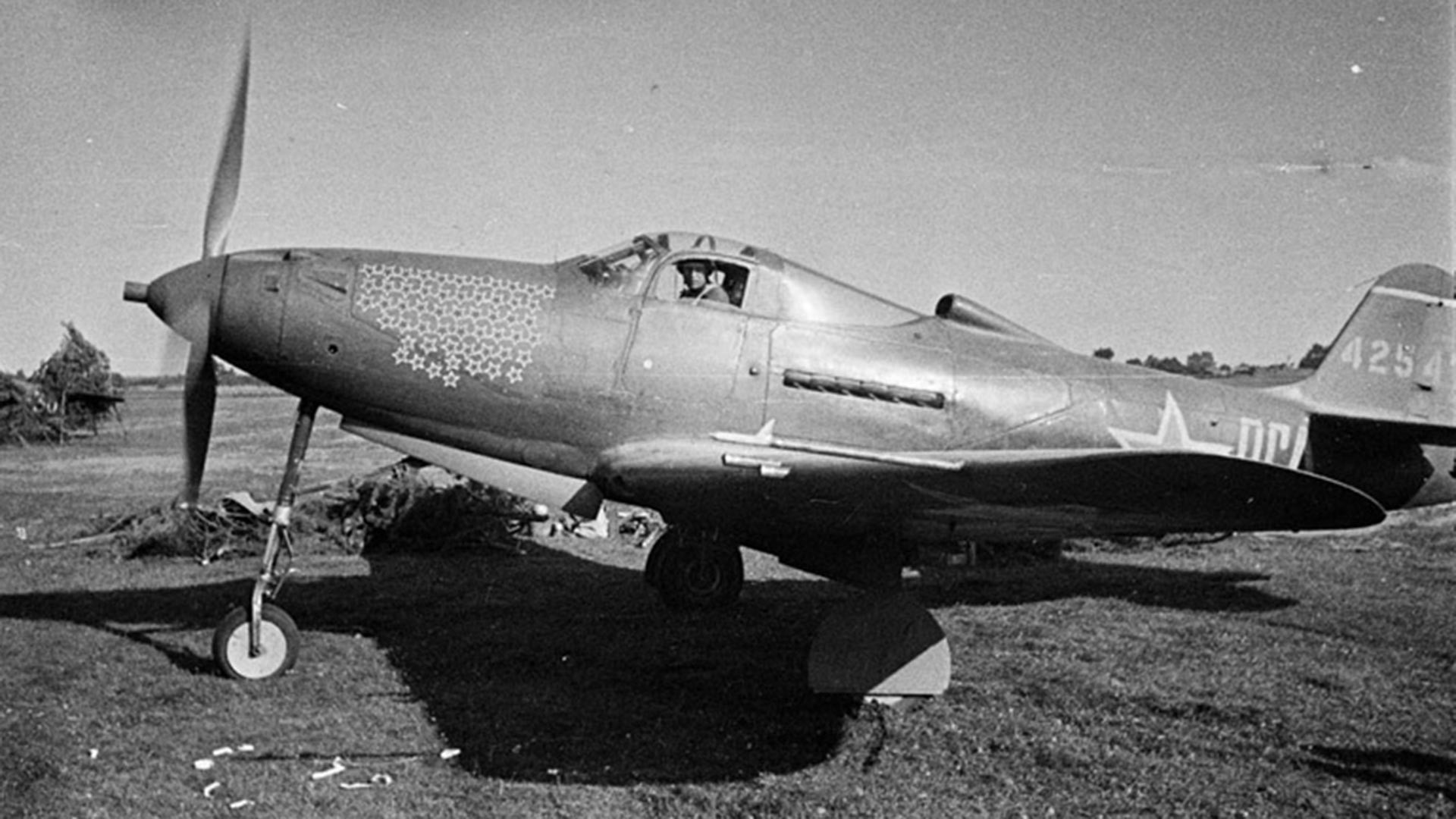What British and U.S. hardware helped the Red Army in World War II?
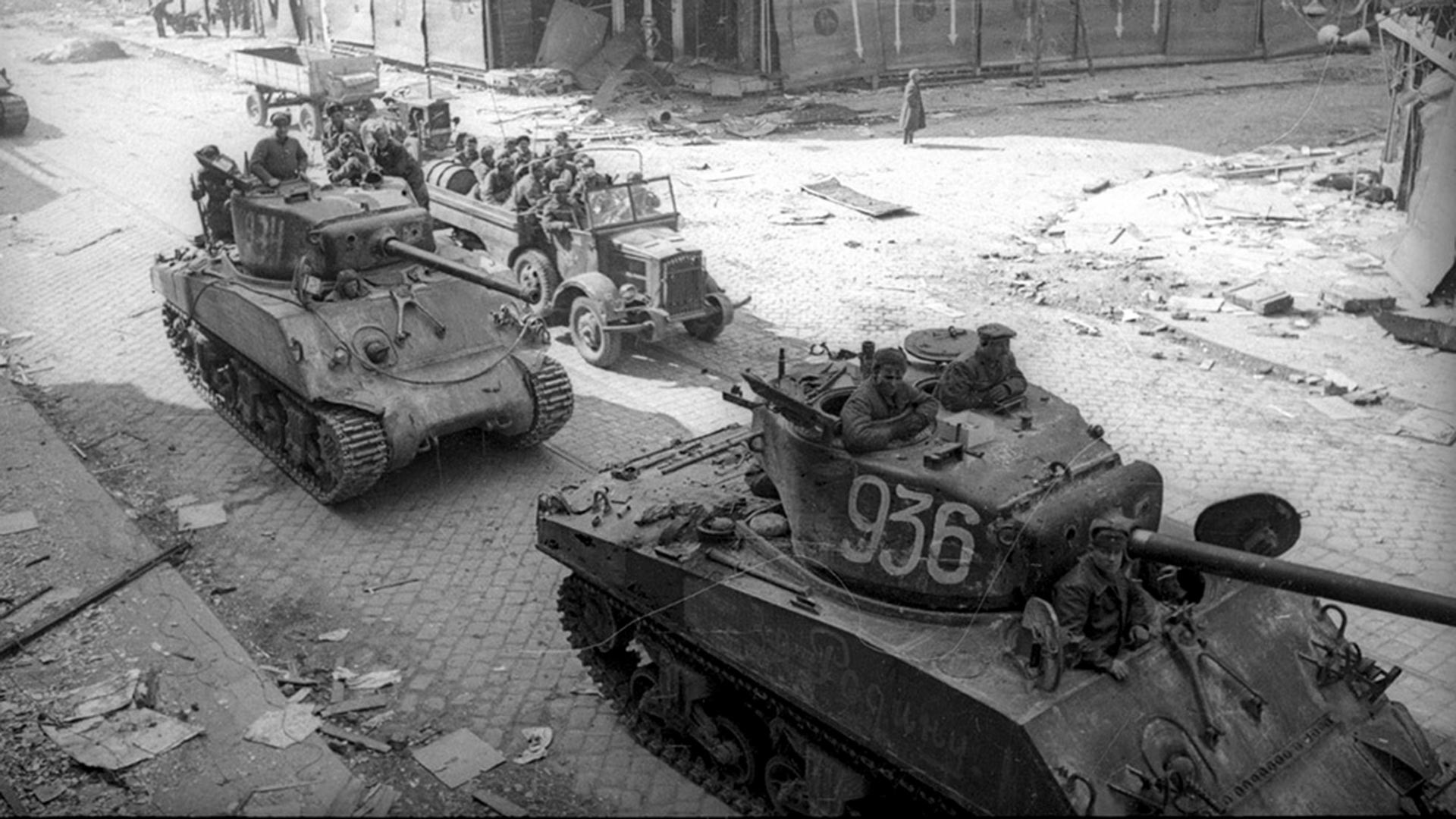
Studebaker US6 truck
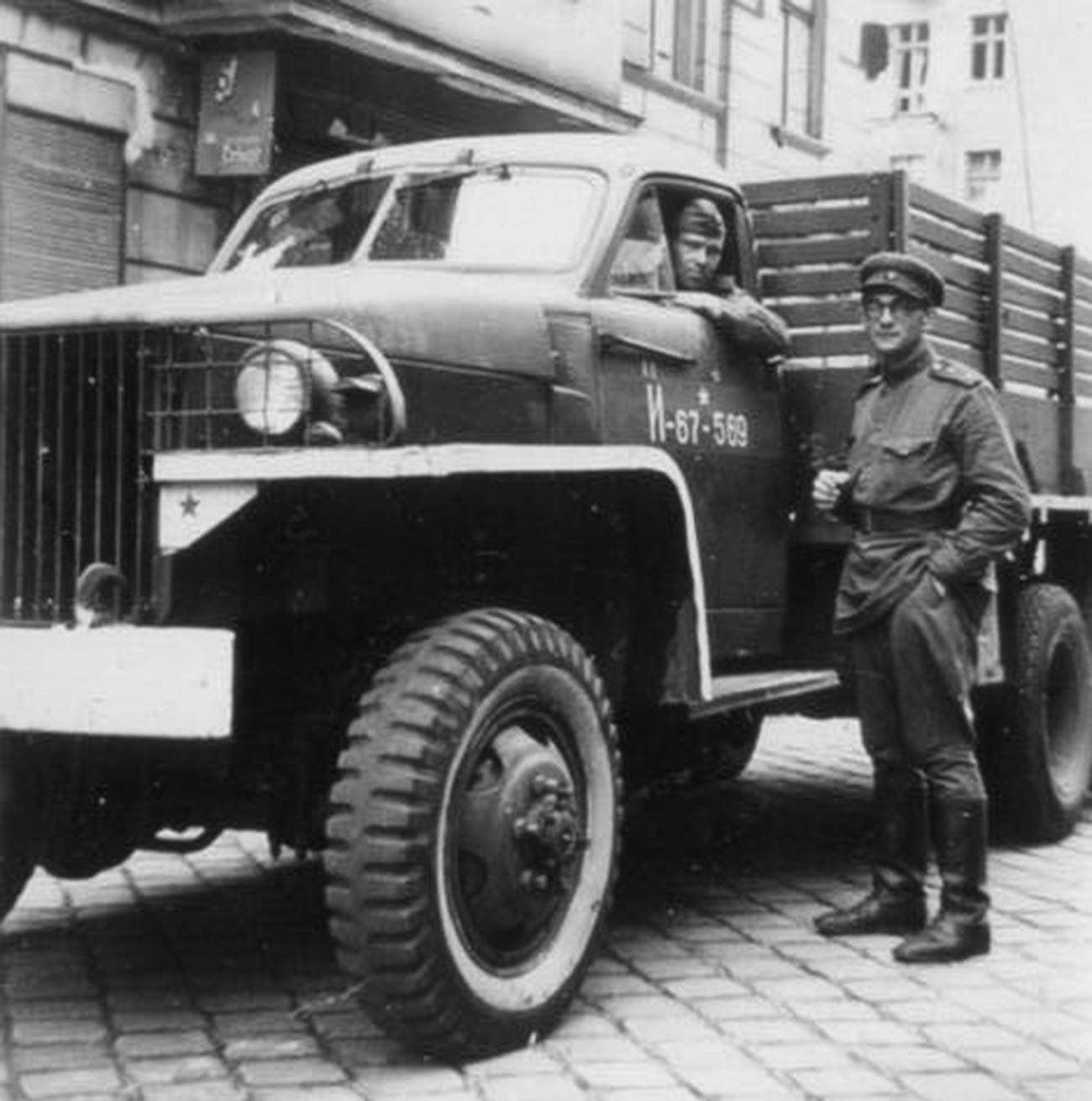
"Had it not been for the American Studebakers, we wouldn't have been able to transport our artillery. Yes, they were in general largely carrying out our frontline transport operations," Marshal Georgy Zhukov once observed in an informal conversation. The 150,000 trucks delivered to the Soviet Union under the Lend-Lease program became the real workhorses of the Red Army.
With the USSR having lost a huge number of trucks during the early period of the war, and the manufacture of new trucks running at too slow a pace, the Studebakers could not have come at a more opportune time. They were used as towing vehicles, trucks and platforms for the famous Katyusha rocket launchers.
While not too popular in the United States, the US6 trucks were loved in the Soviet Union for their comfortable cabin, powerful engine, road holding and high cross-country performance. Many post-war designs in Soviet vehicle manufacturing were based on the Studebaker.
M4A2 Sherman tank
"In 1944, we started to receive delivery of American Sherman tanks. In my opinion, it was the best American tank in service during the war. It had a good engine, good armor and good armaments," recalled Pyotr Kurevin, chief of staff of one of the tank battalions of the 50th Guards Tank Brigade.
Armed with a 75mm cannon and a Browning anti-aircraft machine-gun (a rarity on Soviet tanks), the fast and maneuverable Shermans also had their drawbacks. The tank's height made it an excellent target on the battlefield and its armor was more vulnerable than that of its and Soviet counterparts.
More than 4,000 M4A2 tanks arrived in the Soviet Union and went into service in the Red Army. And while American troops weren’t the first to reach the capital of the Third Reich, their tanks did. The Soviet 2nd Guards Tank Army alone lost 209 Shermans in the fight for Berlin.
Hawker Hurricane fighter plane
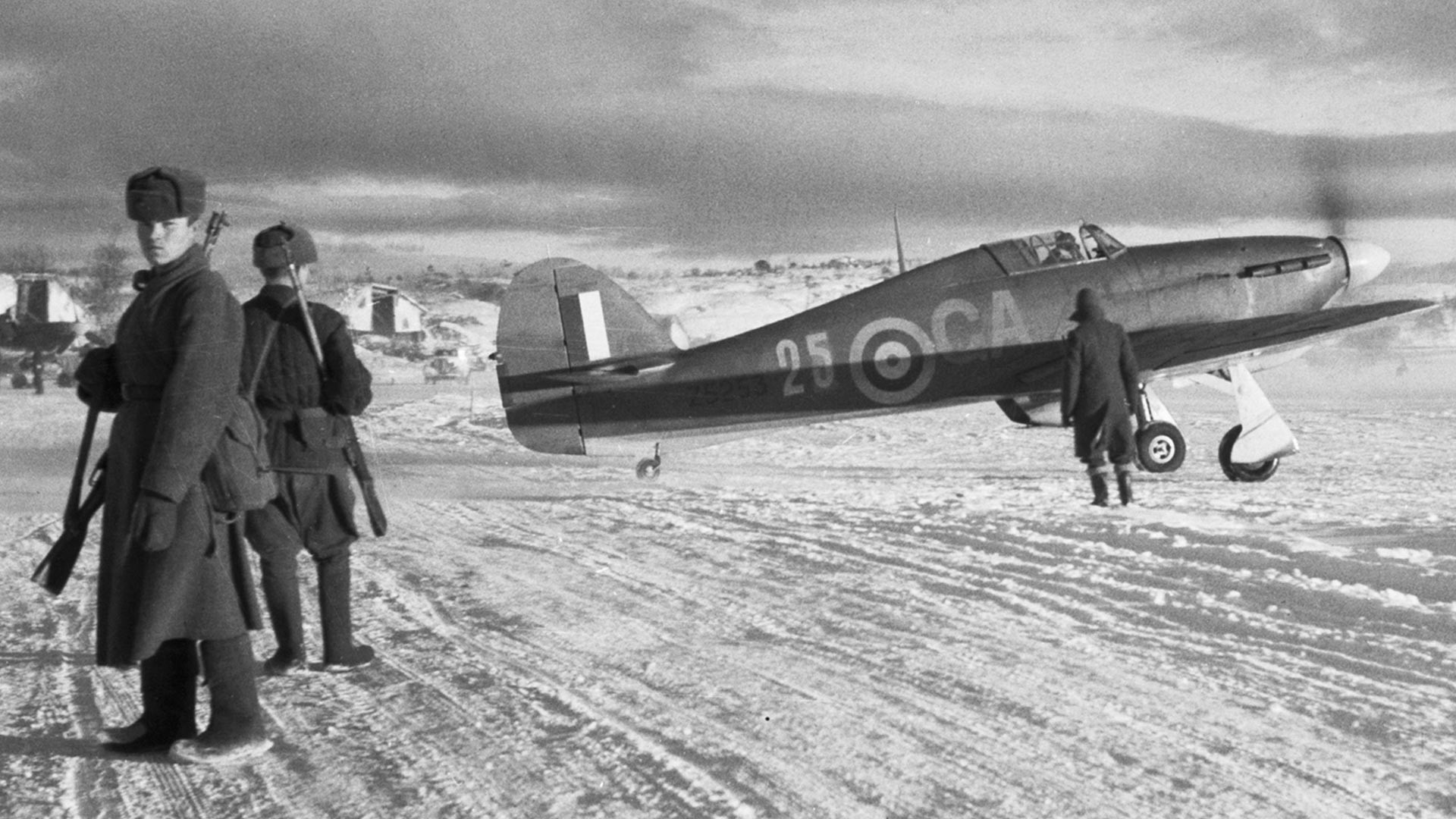
The Hurricanes first appeared in the Soviet Union in the early months of the war when they were needed most. Due to the heavy losses the Soviet Air Force needed to be replenished urgently. The British fighter plane was particularly useful providing cover for the Allies' Arctic convoys, as well as during the defense of Moscow.
More than 3,000 Humpbacks, as the Hurricanes were nicknamed in the USSR, arrived in the country, but they didn't arouse much enthusiasm among Soviet pilots. By the end of 1941, the planes were already considerably inferior in their combat features compared to the latest versions of their main rival, the Messerschmitt Bf 109.
"We were given Hurricanes: it was a piece of junk, not an aircraft," recalled Vitaly Klimenko, senior guards lieutenant of the 1st Guards Fighter Aviation Regiment. "The MiG fighter may have been like a flatiron close to the ground, but at high altitude it was king. The Hurricane, however, had neither speed nor maneuverability. It had a thick wing profile. In our fighter planes the pilot seat armor was concave, but the Hurricane's was flat and easily penetrated. Six machine-guns on board might seem like a good thing to have, but the ammo load was tiny. Its Merlin XX engine was utterly useless. During acceleration it could overheat and seize up."
Willys jeep
The command personnel of the Red Army immediately fell in love with the American Willys army vehicle. Small but powerful and maneuverable, it travelled easily and quickly cross country. The absence of doors allowed the driver and passenger to abandon the vehicle quickly in case of danger. At the same time, the deep placement of the seats prevented those inside from falling out during movement.
Willys didn’t just carry generals. They were also used as artillery towing vehicles for 45mm anti-tank and 76mm divisional guns.
About 52,000 were sent to the Soviet Union. The Willys jeeps are pretty much the last survivors of the Lend-Lease military equipment program still taking part in annual Victory Parades in Russian cities.
Bell P-39 Airacobra fighter plane
This American fighter was the favorite of many Soviet aces, including Alexander Pokryshkin and Grigory Rechkalov (each had 65 kills). It had amazing survivability: Even riddled with bullets it could carry on fighting.
The Allies were happy to send Airacobras to the Soviet Union. The P-39 was of little use in the high-altitude air battles common in Western theaters of war. On the Eastern Front, Soviet and German pilots fought mainly at medium and low altitude, and here these aircraft always performed excellently.
In the end, during the entire duration of the war, the USSR received 4,952 Airacobras, which means that more Airacobras were supplied to the Soviet Union under Lend-Lease than any other type of aircraft.
Ford GPA amphibious vehicle
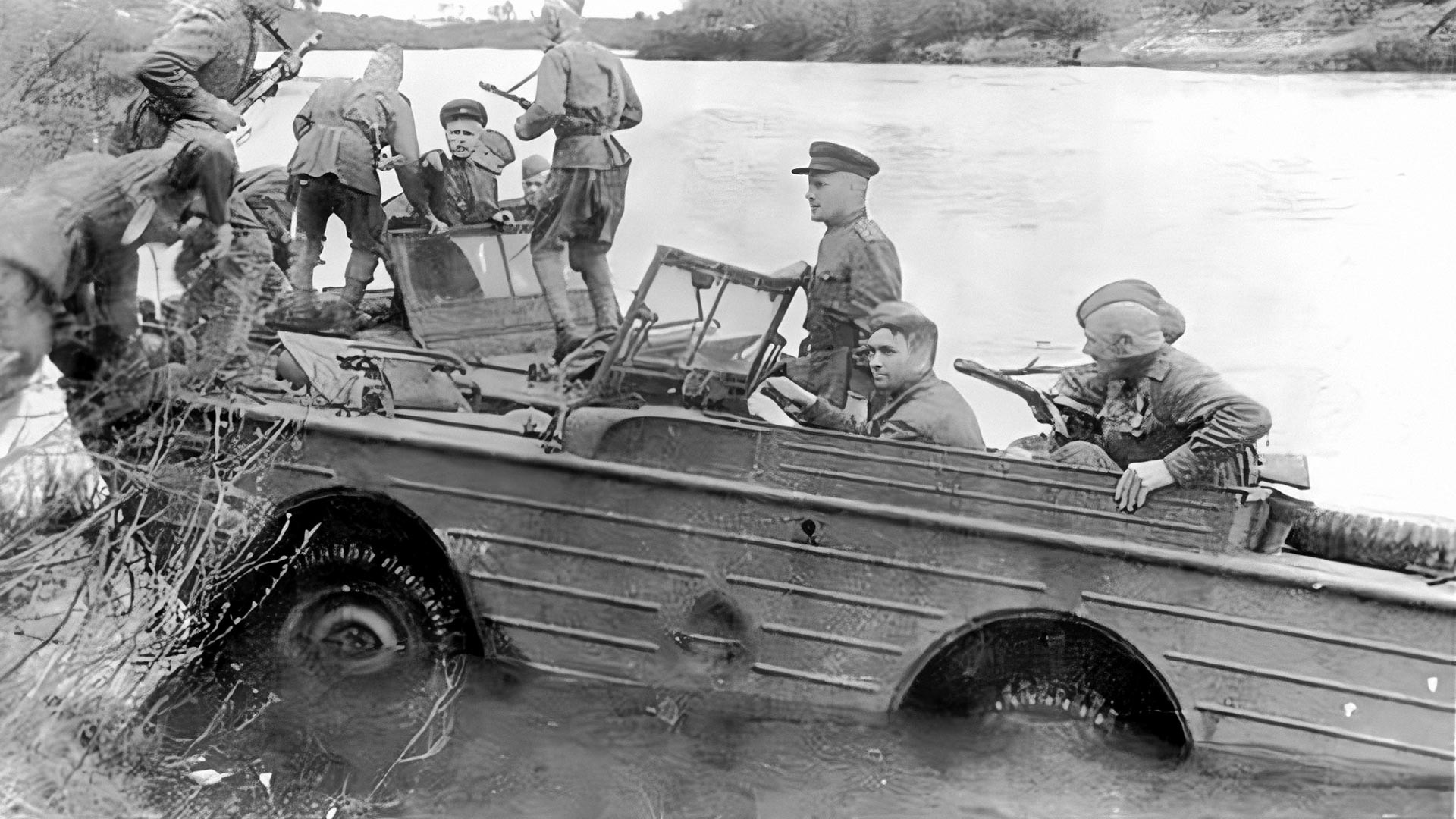
These amphibious vehicles were not very popular with American soldiers. They sat low in the water, causing waves to swamp the hull even during light choppiness at sea. On the other hand, the Red Army, which mainly had to ford rivers, was quite pleased with the GPAs.
Unlike motorboats, the GPAs didn't require complicated operations when being transported, launched or landed. In April 1944, 11 separate motorized special operations battalions were formed using Ford GPAs to cross rivers and reach the enemy-occupied side, as well as to clear the beachheads of mines and hold areas until friendly troops arrived.
In total, the Soviet Union received about 3,000 of these vehicles from the Allies. The Red Army gave them the designation, Ford-4.
If using any of Russia Beyond's content, partly or in full, always provide an active hyperlink to the original material.
Subscribe
to our newsletter!
Get the week's best stories straight to your inbox

